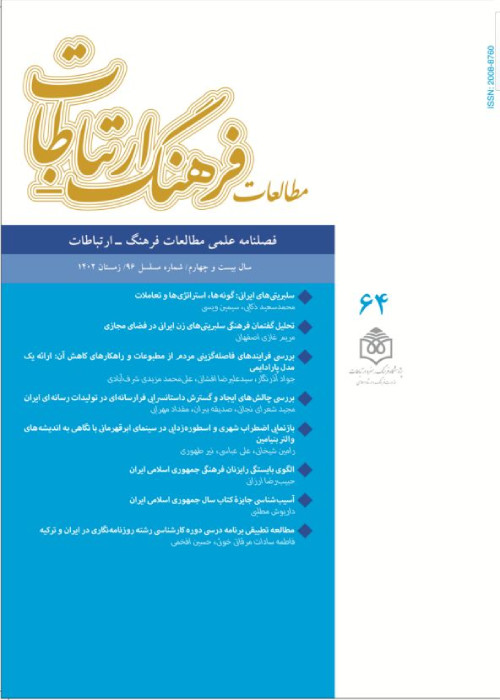A study of the influential factors in the drug addiction of the youth(aged 14 to 29) based on Agnew Theory
Author(s):
Abstract:
Drug addiction is one the major problems in our country. Since the causes of drug addiction are numerous and the inclinations toward it are complicated, there is not a coherent theory to clarify those causes and inclinations; the theories we know, though very important, are not able to explain them. Agnew theory is very significant because it puts forward a new approach toward the sources of abnormality. Therefore, the main purpose of this study is to try out Agnew theory practically and to find out how this theory can explain the causes of drug addiction. According to Agnew theory, the main factor in each type of abnormality, including drug addiction, is "strain" and this does not belong to a specific group or class. In other words, the sources of pressure are not bound to the class and each person, regardless of his or her class or group, is exposed to this pressure. In response to this question that why not every person under this pressure turns into abnormality or addiction, Agnew theory proposes a body of interfering factors such as religionism, self confidence,... that reduce the probability of the youth's abnormalities like addiction. Based on the theoretical framework of this study, the survey method (the type of causal-comparative in the method of referring to reality) has been used. To collect data, a questionnaire with high reliability and creditability has been filled out by 400 people. The questionnaires without answers and those with contradictory answers were excluded. Finally, 374 questionnaires were chosen as samples for this study from which 185 were the addict's and 189 were the non-addicts'.The results show that the distribution of strain in the two groups of addicts and non-addicts is different and moves in opposite directions, namely, addicts, compared to non-addicts, are more likely to be exposed to different types of strain. Looking into the interfering variables in the two groups of addicts and non-addicts, we have come to this conclusion that the distribution of these variables among the groups of addicts and non-addicts reflects a meaningful difference; in other words, we can see a much higher degree of self confidence and religionism in the non-addict group than the addict one.
Language:
Persian
Published:
Journal of Culture - Communication Studies, Volume:9 Issue: 2, 2008
Page:
79
magiran.com/p742584
دانلود و مطالعه متن این مقاله با یکی از روشهای زیر امکان پذیر است:
اشتراک شخصی
با عضویت و پرداخت آنلاین حق اشتراک یکساله به مبلغ 1,390,000ريال میتوانید 70 عنوان مطلب دانلود کنید!
اشتراک سازمانی
به کتابخانه دانشگاه یا محل کار خود پیشنهاد کنید تا اشتراک سازمانی این پایگاه را برای دسترسی نامحدود همه کاربران به متن مطالب تهیه نمایند!
توجه!
- حق عضویت دریافتی صرف حمایت از نشریات عضو و نگهداری، تکمیل و توسعه مگیران میشود.
- پرداخت حق اشتراک و دانلود مقالات اجازه بازنشر آن در سایر رسانههای چاپی و دیجیتال را به کاربر نمیدهد.
In order to view content subscription is required
Personal subscription
Subscribe magiran.com for 70 € euros via PayPal and download 70 articles during a year.
Organization subscription
Please contact us to subscribe your university or library for unlimited access!


